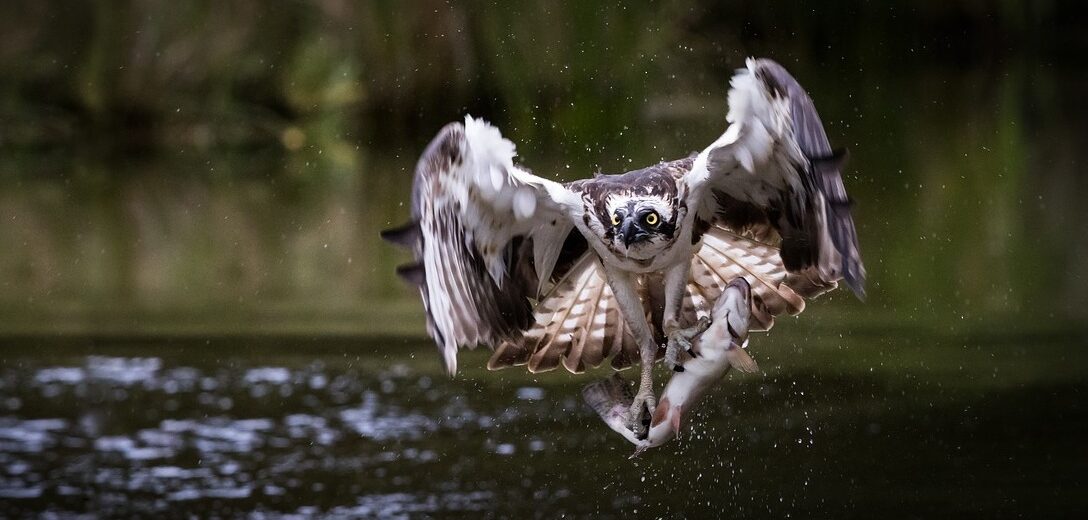
The osprey, aka river hawk, sea hawk, and fish hawk, is a unique bird of prey found throughout the world, sans Antarctica. These raptors are the second most widely spread bird of prey, after the peregrine falcon. Ospreys are known for their incredible migratory journeys. It isn’t uncommon for a single bird to tally up 160,000 miles of migratory flight in their lifetime. They are also known for their fishing prowess. In North America, in the 20th century, the pesticide DDT was widely utilized. This caused a huge decline in the osprey’s population. Since DDT was banned in 1972, these amazing predators have made a remarkable comeback. They are now listed as Least Concern by the IUCN.
First the Stats…
Scientific name: Pandion haliaetus
Weight: Up to 3 lbs.
Length: Up to 26 inches
Wingspan: Up to 5 feet
Lifespan: Up to 25 years
Now on to the Facts!
1.) The North American osprey is among the only raptors that preys almost solely on fish. Preying on up to 80 different species of fish, this prey item makes up to 99% of their diet.
2.) They are the only raptor to dive, feet first into the water. Then have also been known to dive up to 3 feet into the water to catch a tasty fish.
3.) These raptors can catch fish as large as 4+ lbs.
4.) All of the ospreys around the globe are part of a single species, sans the eastern osprey that is native to Australia.
5.) Ospreys use up to 5 different calls to communicate with each other.
But wait, there’s more on the osprey!
6.) This raptor has been around for approximately 150 million years and has evolved nostrils that close during dives and a backwards facing outer toe that is used for grasping fish.
7.) The osprey is typically a monogamous (mates for life) bird.
Did you know…?
These birds can dive up to 50 mph in order to catch fish.
8.) Their nests are up to 6.6 feet across! Their nests are used for generations and thus slowly gain in size.
9.) Females lay between 2 – 4 eggs each season and both parents tend to their chicks.
10.) Ospreys are preyed upon by bald eagles and great horned owls. Their eggs are preyed on by raccoons, snakes, and other climbing animals.
But wait, there’s still more on the osprey!
11.) These birds eat smelt, flounder, bullhead, mullet, trout, gizzard shad, and sucker, to name a few. During lean times they will substitute fish for small mammals, lizards, frogs, and other birds.
12.) In Buddhism, the osprey is often referred to as the “King of Birds”.
Now a Short Osprey Video!
Also, check out the Critter Science YouTube channel. Videos added frequently!
Want to suggest a critter for me to write about? Let me know here.



